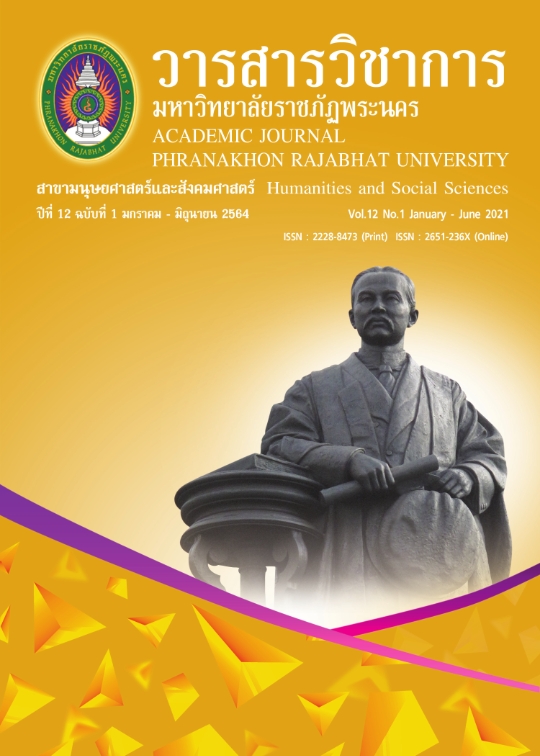THE APPLICATION OF IMMERSION TEACHING METHOD IN LEARNING CHINESE SPEAKING SKILL FOR GRADE 5 THAI STUDENTS
Keywords:
Immersion teaching, Chinese speaking skills, Learning achievement, Students’ learning satisfactionAbstract
The objectives of this study were to (1) compare grade 5 Thai students’ learning achievement in Chinese speaking skill between a control group and an experimental group using immersion teaching method and (2) investigate grade 5 Thai students’ satisfaction in learning Chinese speaking skill using immersion teaching method. Mixed methods were applied and a section of 30 grade 5 Thai students was involved as an experimental group and another section of 30 grade 5 Thai students was selected as a control group using a clustered random sampling method. Four Lesson Plans of 100 minutes each (1 Lesson Plan = 2 Sessions) using immersion teaching were used and taught for 8 sessions (2 sessions per week) in the sample group within the time period of a month. The researcher collected the quantitative data through pre-test and post-test and the qualitative data through classroom observation (CO) and semi-structured interview. The quantitative data were analyzed by standard deviation signed rank test. The qualitative data were analyzed by thematic analysis. The significance value of the post-test mean scores between two groups was .01 which indicated that there was statistically significant enhanced learning in Chinese language speaking skill in an experimental group after the intervention. The results showed that the use of immersion teaching was effective in enhancing Grade 5 Thai students’ Chinese language speaking and the students’ learning satisfaction was positive towards the use of immersion in learning Chinese speaking.
References
Anqi, D. (2012). Analysis of the Immersive Chinese Teacher Training Model at the University of Hawaii - Also on International Chinese Teacher Training. Courses, Teaching Materials, Teaching Methods, 07, 118-123.
Jinming, Z. (2004). Introduction to Teaching Chinese as a Foreign Language. Beijing: Commercial Press.
Lei, S. (2007). The current state of teaching Chinese and suggested guidelines for teaching at matayomsuksa level (grade levels 3 and 4) (Unpublished Master’s thesis). Silpakorn University, Thailand.
Longzhu ,Z. (2015). Application and Thinking of Chinese Immersion Teaching Mode in American primary Schools -- A case study of Cascade Primary School in Orem, Utah, USA (Unpublished Master’s thesis). Guangxi Normal University, China.
Qi, S.(2010).The Feasibility of immersion Teaching Chinese as a Foreign Language in the American Learner's Park. Chinese Science and Education Innovation Guide 2010, 18, 48.
Shuyuan, R., Liping, F., & Hong, L. (2011). A Survey and Research of Summer Study Abroad Programs in China. Applied Linguistics, 3, 3.
Weidong, Z. (2014). The American Model of Chinese Immersion Education: Practice, Experience and Enlightenment. Chinese International, 00, 81-87.
Xiaofang,W., & Yuxia, X. (2012). Overview of Chinese Language Programs in the United States. Journal of Language and Literature Studies, 18, 36.
Xiuqin, L. (2012). Characteristics and Problems of "immersion" Chinese teaching in the United States-A case study of Confucius Classroom at the University of Minnesota. International Society for Chinese Language Teaching ISCLT, 01, 2.
Xun, L. (2000). Introduction to Chinese Education for Foreigners. Beijing: Beijing Language and Culture University Press.
Downloads
Published
How to Cite
Issue
Section
License
"บทความวิชาการในวารสารฉบับนี้ ถือเป็นความรับผิดชอบของผู้เขียนเท่านั้น"
สงวนลิขสิทธิ์ตามพระราชบัญญัติลิขสิทธิ์




